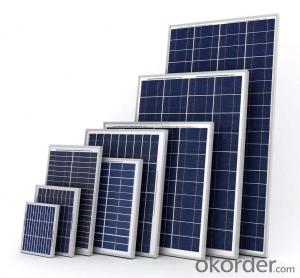CE and TUV Approved High Efficiency 40W Poly Solar Panel
- Loading Port:
- Shanghai
- Payment Terms:
- TT OR LC
- Min Order Qty:
- 10000 watt
- Supply Capability:
- 20000000 watt/month
OKorder Service Pledge
OKorder Financial Service
You Might Also Like
Item specifice
Product Description:
1.Structure of Polycrystalline Silicon Solar Panel
I. High efficiency crystalline silicon solar cell. Even if under the weak light, the solar module can produce maximum power output.
II. Tempered glass (toughened glass): Anti-reflecting coating and high transmission rate glass increase the power output and mechanical strength of solar module.
III. EVA and TPT: Using high quality EVA and TPT to prevent destroying and water.
IV. AI frame: Without screw, rner connection. 6 holes on the frame can be installed easily.
V. Junction box: Multi function junction box with water proof.
VI. Long lifetime: ≥25 years; Less power decrease.
VII. Good performance of preventing from atrocious weather such as wind and hails.
VIII. Resisting moisture and etching effectively, not effected by geology.
IX. The certificate issued by international authority: UL, TUV, IEC, CE.
2.Characteristics
1)Manufactured according to international quality and Environment Management
System (ISO9001, ISO14001)
2)High efficiency crystalline silicon solar cells
3)High transmission Iow iron tempered glass, strong mechanical resistance
4)Anti-ageing EVA and excellent anti-climate back sheet
5)Anodized aluminum frame improves load resistance capabilities for heavy wind loads.
6)Standard waterproof junction box
7)High endurance to different weather
8)Good and friendly package with less transportation and storage space.
3.Warranty
1)10 years limited manufacturing warranty
2)10 years for 90% of warranted minimum power
3)25 years for 80% of warranted minimum power
4.The Pictures of Solar Panels
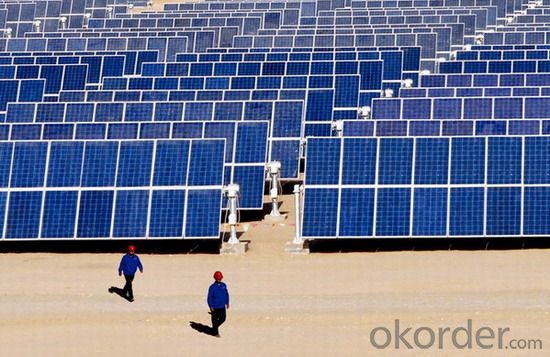
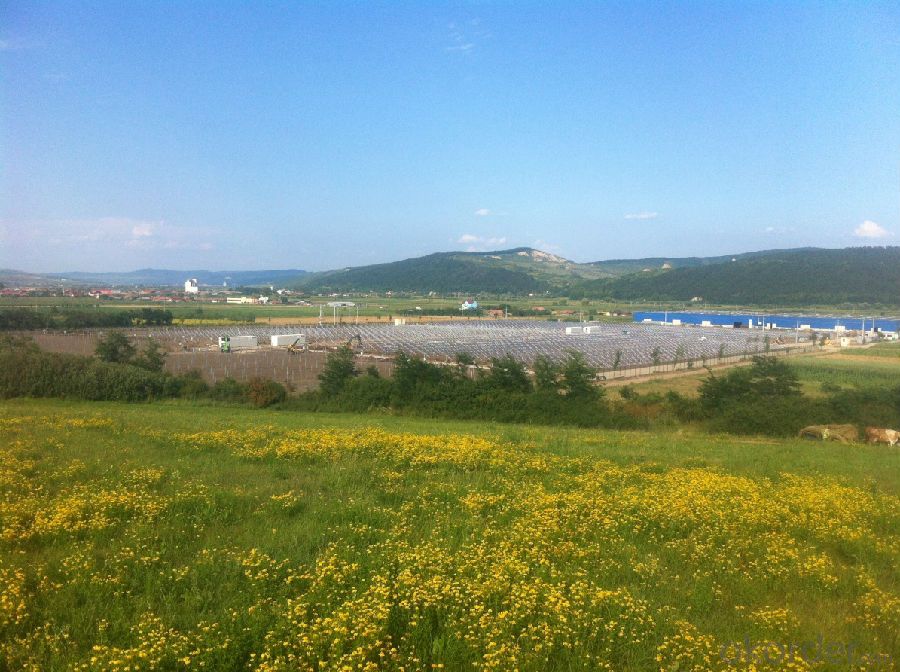
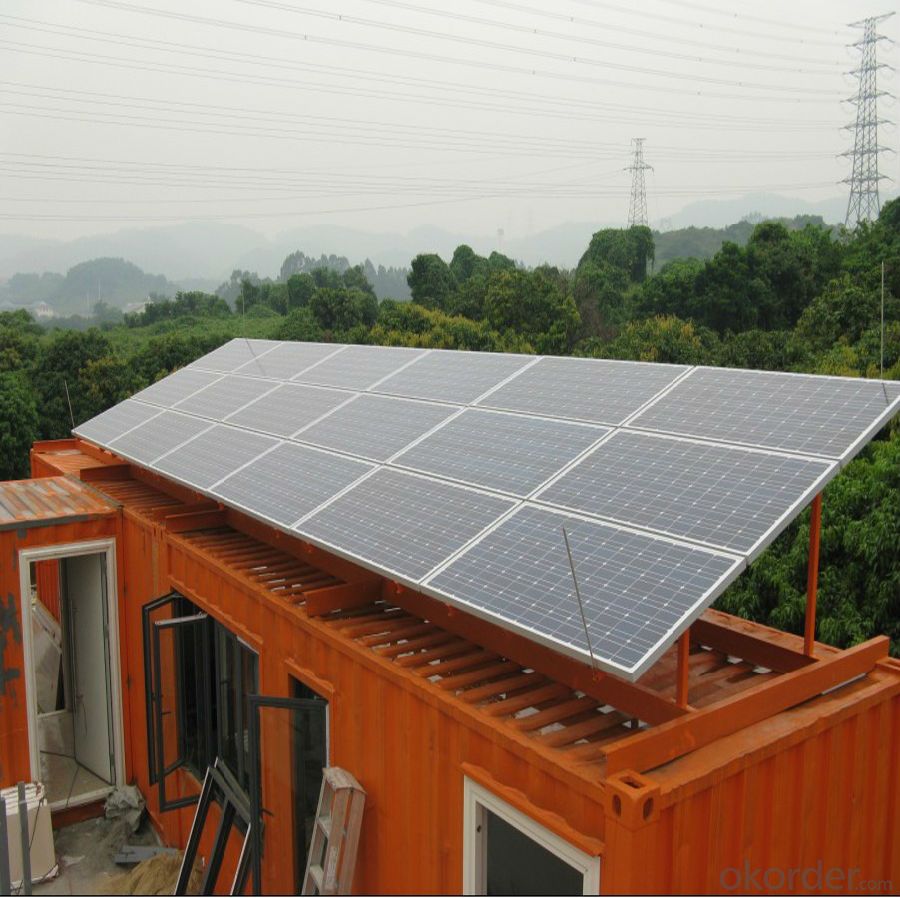
5. Production Flow
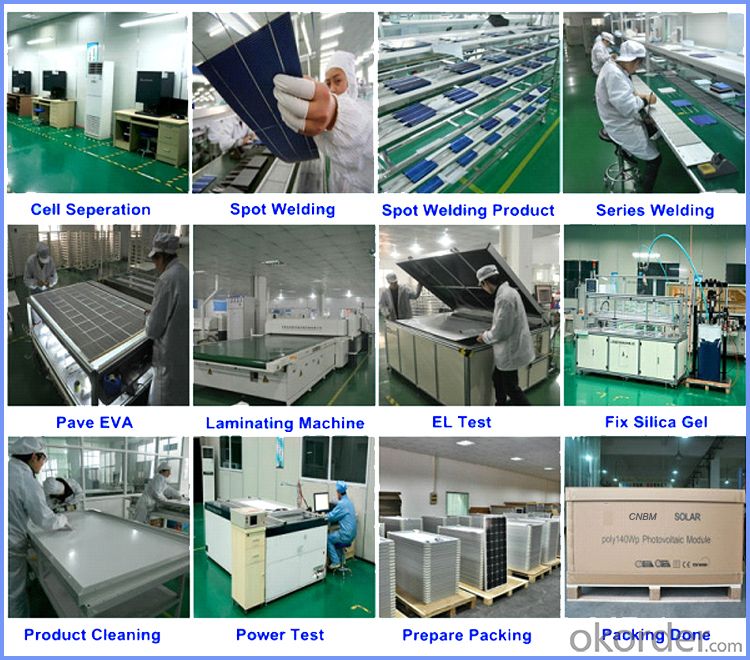
6. Packing Details

7. Use For

- Q:How efficient are the solar panels....?
- There is over 000 watts of power in a square meter of sunshine. A square meter panel converts only about 20% of it into electricity (200 watts). At my workplace, I have a photo-voltaic solar panel electrical system. Its maximum capacity is about 25 kilowatts. On a sunny day it will produce about 80 kilowatt hours of electricity, but we average about 50 kwh/day. At current value, that adds up to a saving of about $4,000 per year, which sounds nice but that's only about a tenth of my total power bill. The system cost $00,000. Pay-back is 25 years (which by coincidence is the length of the warranty). To answer your question more directly: solar panels are not quite efficient enough to be economical.
- Q:Monocrystalline panels are sooo expensive! Thanks for reading.
- image voltaic thermal or warm water beats PV or Photovoltaic on a daily basis. The Mono and Poly are the main conventional. they provide years of provider and function a shown song checklist. they do no longer seem to be very warmth tolerant. production will flow down on warmer day as maximum shrink sheets will instruct. Amorphous Panels are greater warmth tolerant. they're additionally greater valuable at production with ,low easy or in part cloudy days. They produce much less what in keeping with sq. foot and want a larger section. First image voltaic produces those variety of panels. HIT by utilizing Sanyo blends those 2 together to produce a panel with the main suitable of the two structures. All PV is costly. The payoff tiers from 7-2 many years in keeping with many components.
- Q:Can solar panels be used to power a waste management facility?
- Yes, solar panels can be used to power a waste management facility. Solar panels can generate electricity by converting sunlight into usable energy, and this energy can be utilized to power various operations and equipment within a waste management facility, including waste processing machinery, lighting, ventilation systems, and administrative functions. By using solar power, waste management facilities can reduce their reliance on traditional energy sources, lower operational costs, and contribute to a cleaner and more sustainable environment.
- Q:How do solar panels affect roof warranty?
- Solar panels can potentially affect roof warranties because their installation requires drilling holes in the roof, which can compromise its integrity. However, many solar companies offer warranties that cover any damages caused by the installation process, ensuring that the roof warranty remains intact. It is important to check with both the solar company and the roofing manufacturer to understand the impact of solar panels on the roof warranty.
- Q:How much space is required to install solar panels?
- The amount of space required to install solar panels varies depending on several factors, including the size and capacity of the panels, the energy needs of the property, and the available sunlight. On average, a typical residential solar panel system requires about 100-400 square feet of roof space per kilowatt of installed capacity. However, ground-mounted systems can also be installed if there is enough space available on the property. It is recommended to consult with a solar installer to assess the specific space requirements for a particular installation.
- Q:What is the warranty period for solar panels?
- The warranty period for solar panels typically ranges from 10 to 25 years, depending on the manufacturer and the specific product.
- Q:How much space do I need for solar panels?
- The amount of space needed for solar panels varies depending on the size and capacity of the panels. On average, a typical residential solar panel system requires about 100-400 square feet of roof space, but it can also be installed in a backyard or ground-mounted depending on available space. It is best to consult with a solar installation professional who can assess your specific needs and determine the exact space requirements for your solar panels.
- Q:K i'm almost ready to give up! I've bought every kind of pv I can think of, and I can see this technology will not be affordable in my lifetime.I conserve all I can (so far as to handwashing my laundry etc) I'm not rich, but I'm saving for a solar pv with decent amperage. I love tinkering with things if I see the point.All the cells i've seen are very weak. What PV would you buy? (all I need is to power my computer from a deep cycle 2 volt battery connected to an inverter)God Bless You
- Solar okorder /
- Q:Is this a good kit for building a solar panel?
- Guide okorder /
- Q:Can solar panels be installed on south-facing windows?
- Yes, solar panels can be installed on south-facing windows as long as the windows receive sufficient sunlight throughout the day.
1. Manufacturer Overview |
|
|---|---|
| Location | |
| Year Established | |
| Annual Output Value | |
| Main Markets | |
| Company Certifications | |
2. Manufacturer Certificates |
|
|---|---|
| a) Certification Name | |
| Range | |
| Reference | |
| Validity Period | |
3. Manufacturer Capability |
|
|---|---|
| a)Trade Capacity | |
| Nearest Port | |
| Export Percentage | |
| No.of Employees in Trade Department | |
| Language Spoken: | |
| b)Factory Information | |
| Factory Size: | |
| No. of Production Lines | |
| Contract Manufacturing | |
| Product Price Range | |
Send your message to us
CE and TUV Approved High Efficiency 40W Poly Solar Panel
- Loading Port:
- Shanghai
- Payment Terms:
- TT OR LC
- Min Order Qty:
- 10000 watt
- Supply Capability:
- 20000000 watt/month
OKorder Service Pledge
OKorder Financial Service
Similar products
New products
Hot products
Related keywords
